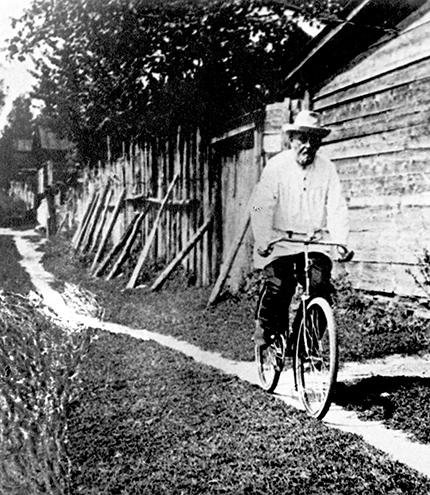Imagining the future
DOI: 10.1063/PT.3.3118
In their novels and short stories, science fiction writers invent future technologies whose effects on individuals and societies propel the plot. But science fiction isn’t about science; it isn’t even mostly about science. Rather, authors use their speculations to shed new light on what continues to make us human.
My favorite science fiction writer, Iain Banks (1954-2013), did just that in his nine novels and three short stories that feature a galaxy-wide civilization called the Culture. Among the Culture’s technologies are faster-than-light travel, spaceships the size of Jamaica, powerful artificial intelligence (AI), the ability to manipulate gravity and other forces of nature, and molecular control over human anatomy and physiology. So advanced is the Culture that the economic needs of all its citizens, human and AI, are comfortably met. Work, even money, is unnecessary. Taken for granted by its citizens, the stupendous technology frees Banks to explore questions of morality in settings far beyond any found on 21st-century Earth.
By contrast, the technology in Michel Faber’s novel Under the Skin (Mariner Books, 2000) requires little suspension of disbelief. Advanced plastic surgery, genetic modification, and space travel suffice to prime the plot. The underlying economic premise is implausible: Quadrupedal extraterrestrials kidnap a modest number of humans and raise them in a secret outpost in Scotland as a source of exotic meat for their home world. Through the novel’s main character, an alien female called Isserley, Faber transcends his grim premise to illuminate the experience and consequences of extreme alienation.
By invoking Banks and Faber, I don’t mean to suggest that the technological or economical premises of most works of science fiction are wild and distant extrapolations. In Air: Or, Have Not Have (St Martin’s Griffin, 2005), author Geoff Ryman takes an existing technology, wireless internet, and adds an upgrade: the ability to interact with the internet through thought.

In 1895 rocket scientist Konstantin Tsiolkovsky, shown here, devised a means to reach geostationary orbit that remains to be realized: the space elevator.
SMITHSONIAN NATIONAL AIR AND SPACE MUSEUM (NASM 92-17002)

Ryman’s premise is not as far-fetched as it might seem. Three years ago Brian Pasley of the University of California, Berkeley, and his collaborators attached arrays of electrodes to the auditory cortex of volunteers while their skulls were opened for surgery. When the patients were read words, Pasley’s team correlated the words with the patients’ brain waves. By the end of the experiment, the team could predict what the patients heard based solely on their brain waves.
Speculations that are grounded in reality can be found in Frank Wilczek’s feature article, “Physics in 100 years,” on page 32
Wilczek opens his article with the hope that it will provoke his readers to make their own predictions. I invite you to take up the challenge by entering our essay competition. Details appear on page 36





